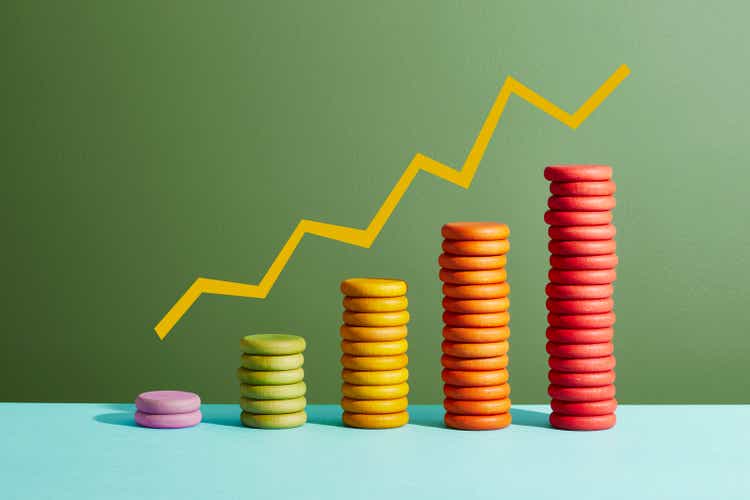Richard Drury
Listen below or on the go on Apple Podcasts and Spotify
The consumer price index held few surprises, boosting stocks. (0:15) Sea Limited rallies on solid revenue. (2:21) Have a good talk with Barbie AI? (3:31)
This is an abridged transcript of the podcast:
Our top story so far, retail inflation held few surprises in July, with the overall number steady but core inflation, which the Fed watches, continuing a reacceleration that started in March.
The July core Consumer Price Index, which excludes food and energy, ticked up to a 3.1% annual rate, its highest level since February. That exceeded the 3% consensus and the 2.9% pace in June.
Core CPI rose 0.3% on the month, in line with forecasts.
Economist Justin Wolfers says: “For two years, inflation was declining toward the Fed’s target. That seems to be over.”
Including food and energy, the CPI rose 0.2% M/M as anticipated. On a Y/Y basis, that comes to a 2.7% increase, compared with the 2.8% consensus and even with June.
The index for shelter costs increased 0.2% in July and was the primary factor in the all-items monthly index. The food index was unchanged, and the energy index dropped 1.1% M/M in July, with the index for gas falling 2.2% in the month.
Guy LeBas, a strategist at investment bank Janney, says there was “not really” much price pressure from tariffs, with costs being absorbed into corporate margins now, but companies will raise prices on tariffed goods into the fall.
The stock market seemed relieved that the numbers didn’t come in hot, disrupting rate cut expectations after the weak jobs report. Equities rallied while Treasury yields fell.
Skyler Weinand, chief investment officer at Regan Capital, says consumers “are feeling wealthier again thanks to rising stock and home prices and that has brought back FOMO (fear of missing out) and dip buyers, who have been rewarded time and again. The U.S. consumer and corporations are as healthy as they have ever been and have plenty of dry powder to prolong this stock market rally.”
The odds of the Fed cutting three times this year rose to 57% from 42%, with a September quarter-point cut almost completely priced in.
Weinand said a “September rate cut would be an insurance rate cut and help to protect the Fed from any significant labor market deterioration that can be caused from keeping rates elevated.”
“So far, U.S. businesses have absorbed the tariff costs, as revealed in many corporate earnings reports. It’s only a matter of time before tariff costs make their way through to consumers if businesses want to maintain margins and profitability,” he added.
Among active stocks, Sea Limited (NYSE:SE) is surging after the e-commerce company’s second quarter revenue beat estimates. The owner of Shopee saw its revenue grow about 38.2% year-over-year to $5.3 billion, topping estimates.
CEO Forrest Li said, “we are also committed to trying out new genres and new markets and testing the boundaries of future game experiences by embracing AI. Given all of this, we are raising our full-year guidance for (online games developer) Garena and expect bookings to grow more than 30% in 2025, year-on-year.”
Autonomous vehicle company Pony AI (PONY) reported quarterly revenue of $21.46 million, up 75.9% from the last year.
Robotaxi services revenue was $1.5 million (RMB10.9 million) in 2Q, rep an increase of 157.8% from the year-ago period.
And Intel (INTC) continues to see buying interest following a U-turn from President Donald Trump. Trump called Intel CEO Lip-Bu Tan’s success story “amazing” less than a week after calling for his resignation.
Tan visited with Trump and multiple cabinet members in the White House on Monday. The president said the “meeting was a very interesting one. His success and rise is an amazing story.”
In other news of notes, Mattel (MAT) is a prime example of a consumer products company that is leveraging artificial intelligence in innovative ways to improve its business.
The toy giant is using AI to design toys and enhance its business operations. Most notably, Mattel formed a strategic partnership this year with OpenAI to incorporate generative AI into both physical toys and digital experiences across its iconic brands like Barbie, Hot Wheels, and American Girl.
The company said: “By using OpenAI’s technology, Mattel will bring the magic of AI to age-appropriate play experiences with an emphasis on innovation, privacy and safety.”
Mattel’s goal is to develop AI-powered toys and games that can interact with children in more personalized, responsive and engaging ways, including conversation-based play and adaptive learning experiences. For example, Mattel envisions toys that can hold natural conversations, participate in interactive storytelling and even update their content over the cloud to stay fresh and relevant for kids.
The company also utilizes advanced generative AI, such as Adobe’s Firefly and ChatGPT Enterprise, to help designers brainstorm and refine product packaging, accelerating the creative process and reducing the time to market for new toys.
And in the Wall Street Research Corner, Citi strategist Scott Chronert has boosted his S&P 500 (SP500) year?end target to 6,600 from 6,300, expecting stronger corporate earnings and macro tailwinds outweighing the effects of tariffs.
The 2025 and 2026 EPS forecasts for the group were raised to $272 and $308, respectively, up from $261 and $295.
Chronert said the latest tax and spending bill could benefit corporate forward earnings. His team sees tax cuts offsetting any tariff drag as more than 81% of S&P companies have beat analysts’ estimates of Q2, managing rising input costs and supply-chain issues better than expected.
Chronert also said this earnings season showed “little evidence of the harmful impact of tariffs” as the U.S. is still expanding, and consumer spending is holding up.
#CPI #arrives #line #core #inflation #trends
